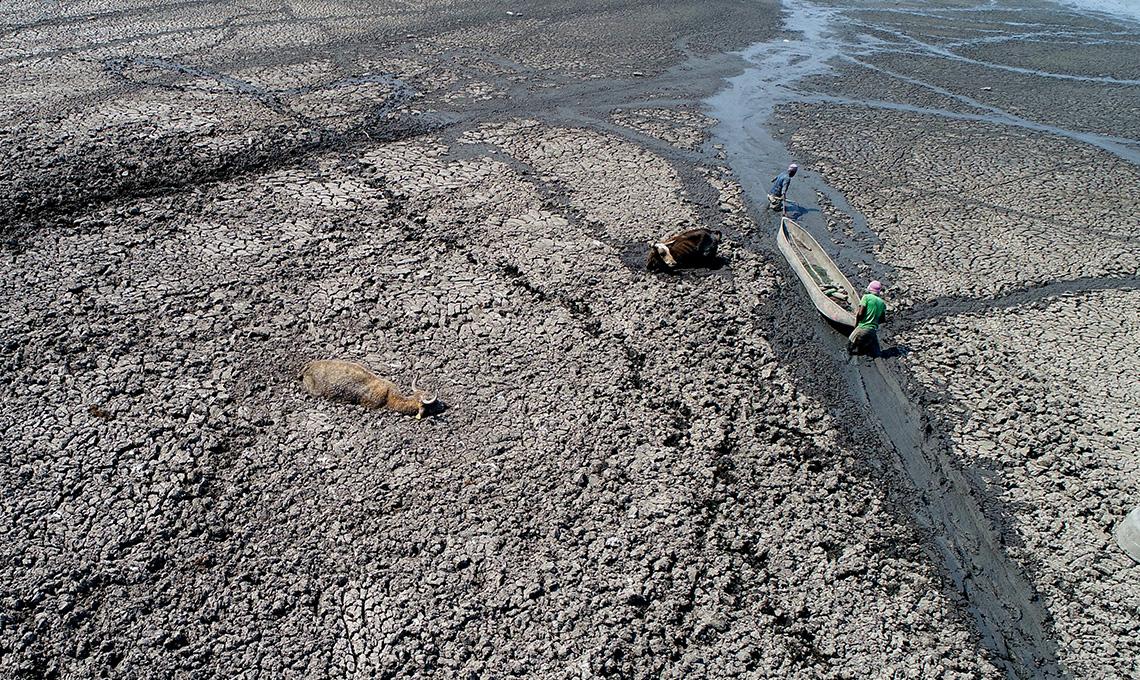Member States of the Southern African Development Community (SADC) are vulnerable to a range of natural disasters and, since many events affect several countries simultaneously, a regional approach to managing the risks is appropriate and necessary. Since 2000, countries in Southern Africa have experienced an increase in the frequency, magnitude and impact of drought and flood events. Climate change is expected to significantly affect the region and increase risks related to water resources, fire, and agriculture and food security. Furthermore, island states, such as Seychelles, have their own unique set of problems – climate change has left the country in danger of losing its protective reef barrier and a sea-level rise could threaten its survival.
Social and economic under-development, disease epidemics and the impacts of HIV & AIDS exacerbate the situation, posing significant threat to the SADC region and the ability to achieve the United Nations Millennium Development Goals and sustainable development.
Governments and partners in the SADC region need to implement disaster risk management to ensure community safety and protection of economic assets. Disaster risk management includes preparedness, mitigation, response, rehabilitation and recovery. It is multi‐disciplinary, and involves the participation of a multitude of partners and stakeholders, ranging from national governments, non-government organisations, International Cooperating Partners, donors, civil society and the private sector.
Disaster Risk Management Challenges
Key disaster risk management challenges facing the SADC region include the following:
- Institutional frameworks for Disaster Risk Reduction at the regional, national and, in some cases, local/community level, which are often under‐funded and not coordinated;
- Lack of comprehensive and constantly updated risk assessments and analysis;
- Weak information and knowledge management systems, specifically in high risk areas; and
- The need to reduce underlying risk factors.
Small but recurrent disasters often cause more destruction cumulatively than some of the large scale events that tend to draw the attention of the international media. The effects of smaller events compound, giving communities little or no time to recover – a community in recovery is considerably more vulnerable, and as a result, more susceptible to impacts than expected from relatively small disaster events.
Planning in a number of cases is not informed by a comprehensive risk analysis and thus it may not address the priority needs for effective Disaster Risk Reduction.
Role of SADC
All SADC Member States have disaster management structures that undertake national activities, sometimes with assistance from international organisations and cooperating partners. When unexpectedly heavy floods displaced more than a million people in Southern Africa in 2007, SADC began to meet annually to prepare for future occurrences. SADC established a Disaster Risk Reduction Unit responsible for coordinating regional preparedness and response programmes for trans‐boundary hazards and disasters. The SADC Regional Platform for Disaster Risk Reduction was inaugurated in 2011.
The Regional Indicative Strategic Development Plan emphasises that co-operation in food security policies has led to an effective disaster preparedness and management mechanism by implementing programmes and projects aimed at early detection, early warning and mitigation of disaster effects. These programmes include:
- Climate Services Centre (formerly Drought Monitoring Centre)
- Water Programmes
- Natural Resources Management Programme
- Agricultural Information Management System
- Regional Remote Sensing Unit
- Regional Vulnerability Analysis and Assessment Program Management Unit
While SADC has not developed a protocol on disaster risk reduction or management, the multi-disciplinary nature of disaster risk management means that several existing SADC protocols are relevant:
- Protocol on Politics, Defence and Security Cooperation – Article 2 states that a specific objective of the Organ on Politics, Defence and Security Cooperation shall be to “enhance regional capacity in respect of disaster management and co-ordination of international humanitarian assistance.”
- Protocol on Health (1999) - Article 25 on Emergency Health Services and Disaster Management states Parties shall: (i) co-operate and assist each other in the co-ordination and management of disaster and emergency situations; (ii) collaborate and facilitate regional efforts in developing awareness, risk reduction, preparedness and management plans for natural and man-made disasters; and (iii) develop mechanisms for co-operation and assistance with emergency services.
- Regional Water Policy (1995) – includes policy provisions covering people’s protection from water related disasters, including personal security and property protection; disaster prediction, and management and mitigation.
Climate Monitoring and Outlook
The goal of the SADC Climate Services Centre is to reduce the negative impacts of adverse Weather and Climate conditions such as drought, floods and other extreme events on sustainable socio-economic development. The Climate Services Centre aims to achieve this goal through generation and dissemination of meteorological, environmental and hydro-meteorological products.
The Climate Services Centre organises the annual Southern Africa Regional Climate Outlook Forum, which presents a consensus outlook for the major rainfall season of SADC from October to March. The Southern Africa Regional Climate Outlook Forum products are an important Information Service delivered through the SADC website. The Climate Services Centre also provides information directly to the media.


